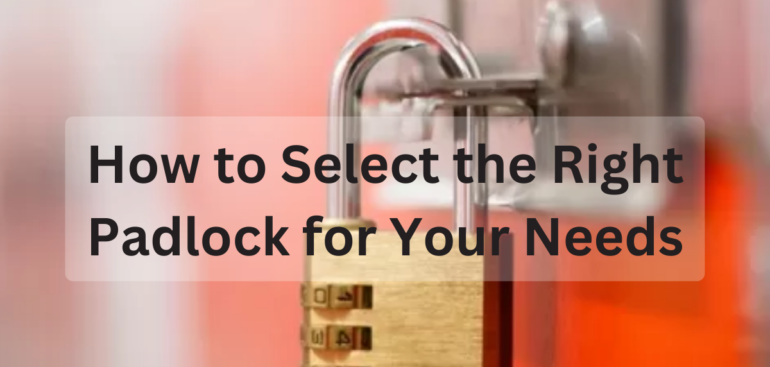In the realm of security, the humble padlock stands as a stalwart guardian, protecting everything from valuables to industrial machinery. However, with a myriad of options available, choosing the right padlock can be daunting. From material and size to durability and keying options, several factors must be considered to ensure optimal security. Here’s a comprehensive guide to help you select the perfect padlock for your specific needs.
1. Determine Your Security Needs: Before diving into the world of padlocks, assess the level of security required for your application. Are you securing a locker, gate, or high-security facility? Understanding your security needs will narrow down the options and guide your decision-making process.
2. Consider the Material: Padlocks come in various materials, each offering unique properties. Brass padlocks are corrosion-resistant and suitable for outdoor use, while stainless steel padlocks provide durability and strength. Choose a material that best suits your environment and security requirements.
3. Evaluate Locking Mechanisms: Padlocks employ different locking mechanisms, including key-operated, combination, and electronic. Key-operated padlocks offer reliable security but require a physical key. Combination padlocks eliminate the need for keys but require remembering or storing the combination securely. Electronic padlocks provide convenience and advanced features but may require power sources.
4. Assess Security Features: Look for additional security features such as hardened shackles, anti-drill plates, and shrouded shackles. These features enhance the padlock’s resistance to tampering, cutting, and picking, providing an extra layer of protection against unauthorized access.
5. Determine Size and Shackle Diameter: Consider the size and shackle diameter of the padlock, ensuring compatibility with the intended application. A larger shackle diameter provides increased resistance to cutting, while a smaller padlock size offers portability and versatility.
6. Verify Certification and Standards: When selecting a padlock, verify if it meets industry standards and certifications for quality and security. Look for padlocks that comply with standards such as ASTM International, ANSI, or CEN (European Committee for Standardization) to ensure reliability and performance.
7. Budget Considerations: While quality and security should be prioritized, consider your budget constraints when selecting a padlock. There are options available at various price points, so weigh the features and benefits against the cost to find the best value for your investment.
8. Seek Expert Advice: If you’re unsure about which padlock to choose, seek advice from security professionals or locksmiths. They can assess your security needs and recommend the most suitable padlock based on their expertise and experience.
9. Read Reviews and Ratings: Before making a purchase, read reviews and ratings of the padlock from reputable sources and customers. Real-world feedback can provide valuable insights into the padlock’s performance, durability, and overall satisfaction.
10. Test Before Deployment: Once you’ve selected a padlock, conduct a thorough test to ensure it meets your expectations and functions correctly. Test the locking mechanism, shackle strength, and resistance to tampering to verify its effectiveness in securing your assets.
Selecting the right padlock is essential for safeguarding your belongings, property, and peace of mind. By considering factors such as security needs, materials, locking mechanisms, and additional features, you can make an informed decision and choose a padlock that provides reliable security for your specific requirements. Remember, investing in quality security measures today can prevent costly losses and protect what matters most tomorrow.

